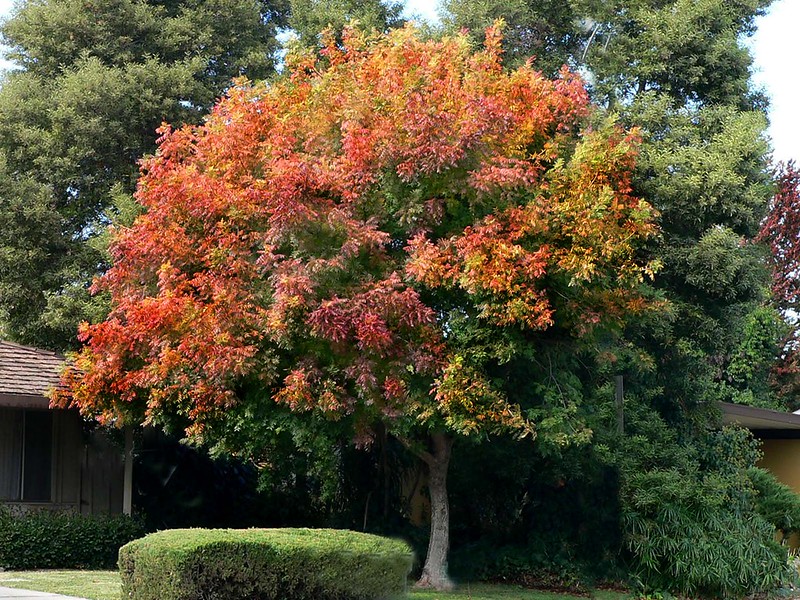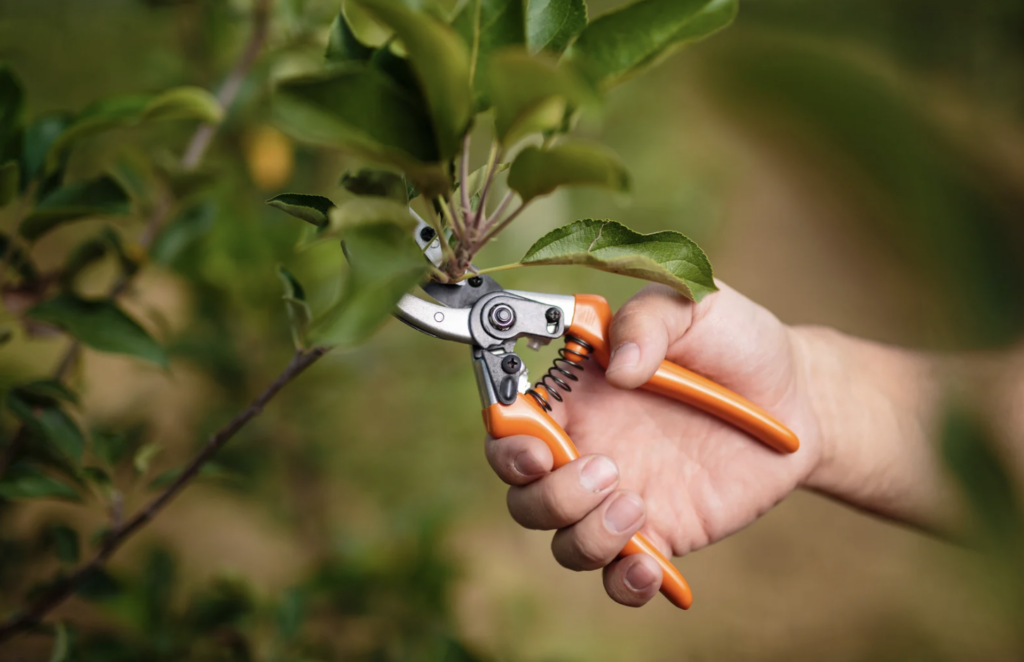
26 May 7 Best Fast-Growing Shade Trees to Thrive in North Texas
When planning your garden, have you considered the benefits that shade trees can bring to your yard? They provide a refreshing canopy that not only enhances the aesthetic appeal but also offers vital shelter from the sun’s intense heat.
A well-placed tree can transform your garden into a cool retreat, creating an inviting environment for outdoor activities. Consider what kind of impact these trees might have on your garden’s ambiance and functionality.
Their majestic presence and varied designs allow you to tailor your yard space effectively.
Choose the Right Shade Trees
Selecting the right shade trees involves considering your space’s purpose, how different species grow, and how well they suit your climate. Each of these factors plays a critical role in ensuring healthy, thriving trees that meet your needs and those of the environment.
Determine Purpose and Position
What do you need your shade tree to do? A large oak offers expansive coverage, but if a small garden bed needs shade, you might prefer something smaller, like a Japanese maple.
Think about the tree’s position. Is it near a structure? Close to other plants? Large trees may interfere with buildings or underground pipes. Pro tip: Consider future growth when positioning new trees to ensure they don’t crowd other parts of your yard or garden. A United States National Arboretum recommendation is to allow enough space from other structures.
Understand Growth Patterns
Every tree species has unique growth patterns that can affect your choice.
Mature Size: Look at both height and canopy spread. A quaking aspen grows fast but may not give the extensive shade of a northern red oak.
Some species, like the autumn blaze maple, offer gorgeous fall color and grow quickly.
Root Systems: Check if roots might disrupt sidewalks or foundations. Root systems affect soil health, and their spread determines susceptibility to storm damage.
Understanding how a species behaves in your area can prevent long-term issues and help you pick trees that deliver your desired shade without excessive maintenance.
Climate and Zone Considerations
Consider your local climate and the tree’s tolerance to conditions like drought and frost. In hot, dry areas, drought-tolerant trees like gingkos might thrive better than water-loving birches.
Use the USDA Plant Hardiness Zone Map to identify trees suitable for your growing zone. Tip: If in Southern California, consider coast live oaks, which are evergreen and handle heat well.
This makes them an excellent choice in warmer climates. Matching your tree species to your local conditions ensures healthier plants and better shade coverage throughout their lifespan.
Popular Shade Trees and Their Benefits
Shade trees provide comfort, enhance property value, and improve air quality. Let’s explore a few types that can transform your yard with their unique benefits.
Maple Trees: More Than Just Fall Color
Maple trees are renowned for their stunning autumn colors, but their benefits extend beyond seasonal beauty. Varieties such as the Japanese Maple can also offer substantial shade throughout the hotter months, which makes them ideal for cooling your home and reducing energy costs.
These trees are well-suited for various soil types and require minimal maintenance.
The dense canopy of maples acts as a natural umbrella. Join this with a lush lawn, and you’ve got the perfect space for family gatherings.
Maples don’t just stand out; they play an integral role in any landscape by supporting a range of wildlife with seeds and foliage, while maintaining a compact, manageable size.
The Mighty Oaks: Enduring and Durable
When you think of strength and longevity in trees, oaks often come to mind. Certain varieties, such as the Red Oak and Shumard Oak, can grow over 70 feet tall, providing ample shade for extensive areas. They are known for their resilience against harsh weather conditions and can adapt to a wide range of environments.
Oaks are low-maintenance, requiring little more than occasional pruning. The sturdy branches offer habitat for birds and squirrels, creating ecosystems in your yard. Over time, these trees can become legacy plants, lasting for generations. They provide not just shade but also contribute to the ecological and aesthetic value of your property.
Fast-Growing Varieties for Quick Canopy
If you’re looking for rapid results, fast-growing trees like Poplars and Willows are worth considering.
The Tulip Poplar and Sycamore are excellent examples, providing substantial shade within a few years. Their quick growth rate can rapidly change the microclimate of your garden and create peaceful retreats from the sun.
These trees excel in a variety of settings, offering a quick fix for barren spots. With a mature height between 60 to 100 feet, they can fill large spaces efficiently. Fast-growers might require regular trimming, but their speedy canopy development often outweighs the maintenance costs.
Evergreens: Year-Round Privacy and Shade
Evergreens like the Redwood and Chinese Pistache provide continuous shade and privacy, making them excellent investments for any yard.

These trees maintain their foliage year-round, offering not only consistent sun blockage but also a windbreak. The dense foliage also acts as a sound barrier, perfect for those living in busy neighborhoods.
Evergreens are versatile in both warm and cooler climates. They’re good for privacy fences due to their lush, thick growth patterns.
The Chinese Pistache, in particular, offers vibrant red-orange leaves in the fall, adding a splash of color. All around, evergreens are a great choice if you want ongoing shade and a green backdrop throughout the seasons.
Bald Cypress: Graceful and Adaptable
Bald Cypress is a standout choice for North Texas due to its adaptability to various soil types, including wet or poorly drained areas. Its feathery, soft green foliage offers a unique texture, and it turns a rich orange-brown in the fall.
It’s a fast-growing tree that can reach impressive heights, making it ideal for those seeking a striking visual addition with functional shade. Though often associated with southern swamps, the Bald Cypress thrives just as well in urban and suburban landscapes across Texas.
It also has a deep root system, making it wind-resistant and ideal for areas prone to storms.
Planting and Caring for Your Shade Trees
Successfully planting and caring for shade trees involves attention to soil quality, proper sunlight exposure, and seasonal maintenance. These factors help ensure long-lasting health and resilience.
Optimize Soil and Sunlight Conditions
When you buy shade trees, start by choosing the right spot with optimal soil and sunlight. Soil quality is crucial; it should be well-drained yet moist.]
Test the soil pH and amend as necessary to suit the tree species you’ve selected. Some trees thrive in slightly acidic soils, while others prefer neutral conditions.
Sunlight is another critical factor. You need to match your tree’s sunlight requirements with the available spot in your yard. For instance, areas that get full sun are ideal for species that need at least 6 to 8 hours of sunlight per day.
Always plant trees at a safe distance from buildings to prevent structural damage and ensure they grow strong.
Seasonal Care from Spring to Fall
Shade trees need different care throughout the year to flourish. Spring is your cue to apply a balanced fertilizer, promoting healthy growth as the tree awakens from winter dormancy.
As summer rolls in, increase your tree-watering efforts, especially during dry patches. It’s essential to maintain even moisture around the roots, preventing both drought stress and waterlogging.
Come autumn, a good pruning session helps the tree shed weak or diseased branches, ensuring a robust structure for next year. Spread a layer of mulch around the base to protect roots over the winter months and retain moisture. A mulch layer of 2 to 3 inches deep is typically effective.

Practical Tips for Longevity and Health
For a tree’s longevity, regular monitoring of its health is vital. Look for signs such as leaf discoloration, poor growth, or pests.
Early detection allows for timely intervention and can prevent long-term damage. It’s also smart to incorporate defensive strategies against common pests and diseases by using organic treatments where possible.
Deep watering techniques support the root system, especially during its first few years of growth.
When buying shade trees, consider consulting with a nursery for expert advice tailored to your environment. Regular check-ups and responsive care will transform your planting endeavors into thriving, towering shade trees.
Where to Find and Purchase Quality Shade Trees
Choosing the right place to buy shade trees can significantly influence the quality and diversity of the trees you’ll grow. Exploring local nurseries and online retailers offers distinct advantages, each providing unique experiences, varieties, and conveniences. Your decision depends on factors like the level of personal interaction you desire and the scope of tree collection you’re interested in.
Local Nurseries vs. Online Retailers

When looking at local nurseries, one major advantage is the ability to see and select trees firsthand. You get the chance to assess the health and condition of the trees directly.
Plus, interacting with knowledgeable staff can help you make informed decisions. They can offer advice tailored to your local climate, which is crucial when selecting the best shade trees for your specific needs.
On the flip side, buying trees online offers convenience and access to broader collections. Platforms like Price Right Trees provide a wide variety of shade trees delivered right to your home.
You can easily compare specifics like size, growth rate, and price, all from the comfort of your couch. Additionally, some online retailers offer perks such as free shipping on large orders, enhancing the value of your purchase.
Ensure Quality and Variety
Whether you opt for a local nursery or an online shop, focus on quality and variety. Seek out nurseries that offer warranties or guarantees, ensuring you’re investing in trees that will thrive.
Diverse shade trees online allow you to find the perfect match for your specific landscaping desires.
Use filters on websites to narrow down your choices based on the specific features you need, such as drought tolerance or fast-growing capability. Local nurseries may offer additional personalized guidance, whereas online retailers can provide easily accessible customer reviews to gauge tree success rates.
Both avenues provide a robust variety, but your choice should align with your priorities and resources.
Achieve a Beautiful, Shady Landscape with These Trees
Choosing the right fast-growing shade trees can transform your North Texas yard into a cool, inviting oasis. By selecting from our top recommendations, you’ll enjoy rapid growth and ample shade in no time!For personalized advice and expert assistance in selecting and planting the perfect trees, contact Price Right Trees at 817-290-4365 and let us help you create your dream landscape!
